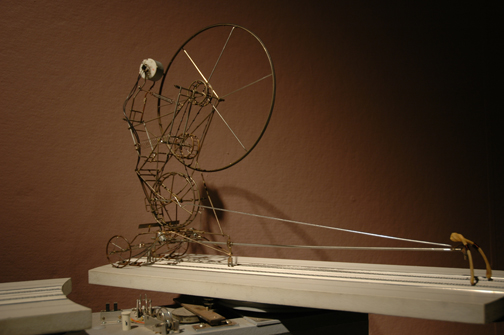This week assignment consisted in choosing at least one joint and at least one plane of motion and mapping the range of motion in some sort of digital or physical representation. Eager to give a step or two away from the computer, I decided to rapid-prototype different approaches for this assignment. The process required materials that permitted quick iterations, for which I laminated stripes of wood, used cork-board pins, foam, rubberbands and adhesive tape.
I chose the arm as a base starting point, and focused first on the elbow. Initial résearch (tilde intended) showed that this is a complex structure. The elbow can perform in different axes, and thus, it affords flexion-extension and also pronation-supination [1. Pronation is the counterclockwise twist for the right forearm and a clockwise twist for the left, when viewed superiorly. Wikipedia ]
The first prototype promptly showed that at system for constraining the flexion-extension was needed; this first attempt allowed free rotation, which is not how the elbow behaves. I needed to restrict the movement between 140° and 150°. Prototype number two achieved that. Third prototype followed the same principle, but with a different position for the rotational axis, wich led to a different range than expected for the max flexion angle. In prototypes two and three, the extension achieved matched that of the elbow, at 0°.
To account for the pronation-supination rotational movement, I segmented one of my structures, to add an inline inner axis. I decided to explore a different approach to limit the rotational movement this time, and instead of doing a mechanical stop like in prototypes 2 and 3, for prototype 4 I tried to replicate the role of tendons, muscles and/or ligaments using rubberbands. This turned out OK, keeping both sections together, and allowing roll-back movement.
Finally, there was a fifth prototype with a complete different approach and materials, relying on concentric discs with a common axle, and a guiding stop rod.
For Images and Video, please visit the original post in my blog.

